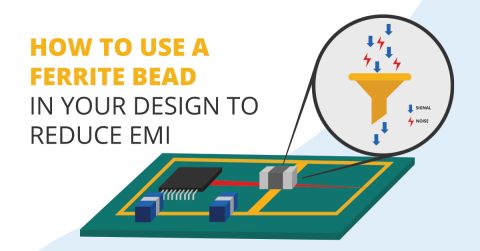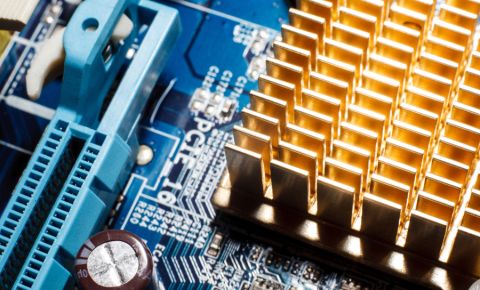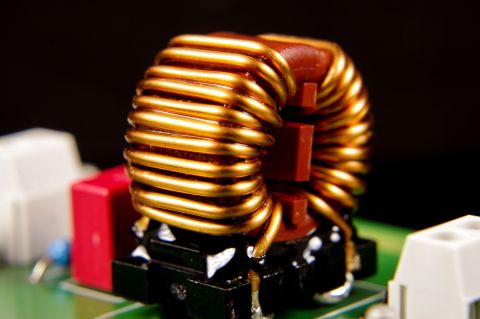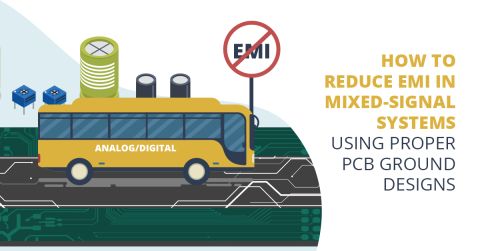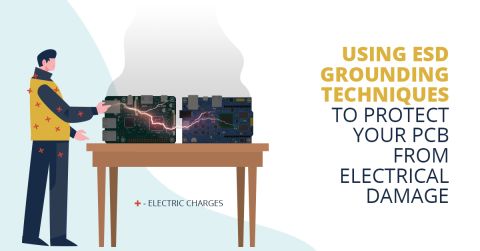EMC Certification and Your Product

I’ve spent most of my career in electronics working with or for small businesses and startups, and helping them shape ideas into a physical product. Some recurring misconceptions I faced with almost every client were regarding Electromagnetic Compatibility compliance. Many had no idea that their products would need EMC testing, some were unaware of the duration of time and cost of certification, and others were unaware of how requirements applied to their products.
Of those that did know about certification, many mistakenly believed that their product didn’t have a WiFi, Bluetooth, or other RF transmitter or transceiver, and therefore didn’t need to undergo ‘RF testing.’ Others felt that as a company making only several dozen or hundred boards, they wouldn’t be required to certify, or could get away with not getting the certification. My favorite one of them all was a company that resorted to using commercially available electronics boards (e.g., Arduino and breakout boards) and just wiring them all together in an enclosure thinking they wouldn’t need to certify their device.
Almost every country has its own EMC regulations and certification requirements. Similarities in regulations across countries can arise when countries share borders, or when another country’s certification/regulatory authority guides the regulation development. For example, Canada and the USA have very similar requirements, and most countries in Europe only require compliance with CE rules. Common requirements allow the certification process to be simpler and more cost-effective than it would be if you had to certify your device for each region in which you plan to market your product. There are countries which require you to test your product against their regulations at a lab within their borders. This can significantly add to your certification cost and time, as it will involve sending devices for testing to multiple labs.
In this article, we are going to focus specifically on unintentional radiators, devices which do not have any intentional RF emissions. It’s not possible to build an electronic circuit without emissions of some sort; any time you have variable current flowing through a conductor, you are creating a magnetic field and therefore radiating electromagnetic energy. Regulations and directives exist to ensure that these emissions do not interfere with other devices or radio signals by ensuring that they are below specified limits.
Why Compliance is Important
If there were no EMC regulations, poorly designed devices could create an environment where radio communication would not be possible, as well as damage or destroy the functionality of other connected or nearby devices. Without these regulations, use of cell phones, radio-based air traffic control, access of the internet over WiFi, satellite communications, and all sorts of other technology-based on electromagnetic waves might not be possible.
You may think I’m taking the examples to the extremes, however, I’ve seen uncertified devices interfere with free-to-air TV signals to such extent that some channels lose all signal quality and become unwatchable in the same building as the device, or that CB radios don’t work nearby. As an extreme example, at a Maker event, I saw a robot with high-frequency, high-amperage motors that had not undergone any testing give an elderly gentleman with a pacemaker difficulty until they switched it off.
How does this relate to you and your product? What if you are making a single unit to install at an industrial facility? What if you’re making breakout boards to sell on Tindie? To quote the European Commission's Electromagnetic Compatibility Directive’s website, “equipment (apparatus and fixed installations) needs to comply with EMC requirements when it is placed on the market and/or taken into service.”
Whether you are selling a single device for a single use or manufacturing a million devices for distribution, you are legally required to certify the equipment. This requirement applies even if you are assembling multiple off the shelf boards into an enclosure rather than making a PCB. The same requirements apply to the USA (FCC rules), Canada (ISED requirements) and every other nation.
You may think you can fly under the radar when it comes to regulations. However, I’ve worked with low volume clients who were previously caught without compliance documents for their products. One was a one-man American business that had sales volumes of only several hundred units a year. He had shipped an order to a distributor in Europe and customs in the destination country withheld the shipment until CE documents could be presented.
Another was selling Intentional Radiators (an RF product), again in low volume, and was fined several hundred thousand dollars by the FCC for selling the uncertified product. Merely making a low volume of sales will not save you should your product come to the attention of a regulatory authority.
Certifying your product is certainly going to be far cheaper than having a shipment destroyed for non-compliance or being fined.
How to Get Your Product Certified
Ultimately, your product needs to go to a certification laboratory that is endorsed or approved by the regulatory bodies you wish to certify your product for. Finding a lab that is within your budget and offers the services you require can be challenging. If your timeline allows it, traveling to an electronics trade show (if your city doesn’t have one) is an excellent way to be able to chat with engineers from a variety of labs. Even relatively small trade shows focused on the business of manufacturing/assembling electronics are likely to have several representatives from several labs present.

The company offering the lowest quote isn’t necessarily going to be the best to test with. You’ll need to work fairly closely with the lab during the certification process, especially if it’s your first time going through the procedure. Ideally, the lab you work with will be working with you through the entire development process of your product. As you develop prototypes, you would visit the lab with the hardware, or send the hardware to the lab, and do pre-compliance testing on the prototype.
Testing prototypes early can allow you to make timely changes to your hardware if issues are found, which will save you valuable time and money compared to only sending the final article off for testing. If you do find problems, engineers at a good lab will give you some ideas on how you can resolve the issues based on their extensive experience, rather than just tell you it failed. Even better, attending pre-certification in person will allow you to implement some of these suggestions on the spot and quickly re-test, so you can return to your office with a list of changes rather than just a list of issues.
What Certifications You Need and at What Price
If you are planning to sell your products in North America and Europe, a good place to start is testing compliance to the USA’s FCC rules, the ISED Canada requirements and the European CE EMC Directive requirements. This will likely cover the majority of potential customers of your product. The EMC regulations set by governments around the world are similar, but they are not all the same. For example, if you are going to market your product in Australia or New Zealand, you may need to test to AS/NZS EMC standards as well; Australia and New Zealand have mutual recognition agreements that may apply to EU EMC Directives you are already testing against.
For a simple unintentional radiator with one mode of operation, one AC mains connection, and no signal/IO ports, you can expect to pay roughly $2,000 for FCC and ISED Canada EMC compliance testing and an additional $4,500 if the CE EMC Directive compliance testing is also undergone. The amount you pay, however, will depend on the lab you are working with as well as the device you are testing.
For battery-powered devices with no charging capability, the cost would be less as the AC mains testing becomes unnecessary. On the other hand, devices that have multiple modes of operation or signal/IO cables that need to be tested, the cost would be higher as additional testing needs to be completed. Testing facilities cost millions of dollars to set up and are staffed by highly experienced engineers with typically significant hourly rates. Consequently, the more complex or lengthy the testing plan for your device is, the more it will cost.
If the device has wireless capabilities that do not utilize a pre-approved radio module or is using a pre-approved module outside of the rules for its use, as specified in its user manual and grant of authorization, then the device would require wireless testing and certification at an additional cost. It is important to check the user manual and datasheet of any pre-certified module to ensure that your antenna (if it requires or allows an external antenna) is specifically mentioned and that you have followed power supply and layout requirements explicitly.
Furthermore, make sure you are using the module for only the modes of operation and power levels specified in its manual. If you do not follow these requirements, your usage of the module would not be classified as pre-approved, and your device will need to be tested as an intentional radiator.
The Certification Experience
Ideally, your experience with compliance testing will begin with pre-testing at the initial prototype stage. If you are not close to the lab you’re working with, you can mail them your prototype or device with all the cables, accessories, and operating instructions for them to set up and test.
Simon Howkins and Parm Singh from QAI Labs in Canada suggest the following to make your testing experience as smooth as possible:
When coming to an EMC Lab to test your product for compliance it is better to be over-prepared. Expect the unexpected. You will need to bring a fully operational device that can operate continuously in its typical worst-case mode of operation. If your device has multiple modes of operation they should all be pre-scanned to determine the worst-case mode. If your device needs auxiliary or support equipment to operate this equipment will also need to be brought to the lab.
If the actual auxiliary and support equipment cannot be brought in, simulated loads and auxiliary equipment should be used. It is very possible that your product will not pass the testing first try and it must be modified in order for it to comply with the EMC regulations. To do these modifications in the lab bring all the necessary tools and components you will need. This could include ferrites, RF filters, shielding materials, capacitors, inductors, resistors and any tools you will need to make the modifications.
A tool you may not have considered bringing is an Exacto style knife with spare sharp blades. A sharp Exacto knife makes it easy to cut small traces or scrape away solder mask to make a solder pad, thus allowing you to add a capacitor, or add any other component to the circuit should the need arise.
Building Certification into Your Project Plan
Simon at QAI Labs had some more words of wisdom in regards to being successful at preparing for EMC certification:
Common mistakes seen in the EMC lab from start-up companies include not incorporating good EMC design aspects into the device from the beginning of the design cycle, not incorporating enough time for the testing and certification of the device into their schedule, leaving the testing and certification of the device to the last minute and not being prepared when they come to the lab for the first day of pre-scan testing.
Andy Eadie’s free eBook ‘Get EMC Design Right First Time’ is an excellent resource to help you incorporate good EMC design from the start. I have recommended this to many clients and all of them told me the advice is both helpful and easy to understand. Allocating time in your project plan for pre-compliance, pre-scan or preliminary R&D testing on prototypes in the design cycle allows you to determine how the device is stacking up against the regulations.
Depending on a lab’s scheduling, it can take some time to run the full certification test after you have completed your pre-certification testing. Leaving the EMC compliance testing to the last minute then discovering the device is failing can be costly if the product is already being manufactured and will have to be modified. Not to mention, deadlines could be missed if new prototypes need to be built and tested.
If you are located in an area where no EMC lab is nearby and are not in a position to travel, you can mail your product or prototypes to a lab with instructions on how to set it up to have it tested.
Simple PCB Design Choices That Aid Compliance
For about four years, I’ve been recommending Andy Eadie’s EMC Fast Pass eBooks and training courses to clients, as I feel they offer a very straightforward and easy to understand guide to EMC compliance and design. I reached out to Andy to ask him what his top tips would be for this article, and here’s what he came up with:
-
PCB Layer Stack
A great place to start when you’re designing a PCB to pass EMC testing is to choose a good stackup configuration. One of the most important aspects is to ensure that you always provide an unbroken reference plane (GND or PWR) on an adjacent layer for all digital (switching) signals. If routing is too dense to do this, add another 2 layers. -
Decoupling Capacitors
Provide every single IC and connector power pin with at least one decoupling capacitor. The currently recommended best practice is to standardize the capacitor values to one value such as 100nF. This helps to avoid accidentally creating power-plane resonances. -
Add Series Resistors to Off-Board and Inter-Board Low-Speed Communications
This is a useful get-out-of-jail-free card to use. For low-speed communications interfaces such as parallel LCD busses and SPI, include a zero ohm series resistor on each track before it leaves the board. If your board fails emissions testing, you can populate 10R-33R termination resistors instead which can dampen the harmonics and reduce emissions. -
Pi-Filter on All SMPS Inputs
Without an EMI filter on the voltage input of an SMPS, a design is more than likely going to fail conducted emissions testing. Always include an EMI filter such as a pi-filter on the input to each SMPS.
Personally, I would suggest taking tip 3 a step further, and adding footprints for extra capacitors, ferrites, and other filter components onto your board if you are new to designing for EMC compliance. It doesn’t cost anything but a little space to add footprints onto your board. However, having to add them, and perhaps have another board revision made, can be expensive both financially and timewise. I often see mass-produced commercial boards with a lot of missing passives. You might think they thought they could get away with removing those components to reduce cost, but it would also be possible that those are footprints added where an engineer thought there might be an EMC issue, and played it safe by adding the footprint.
I have to thank Simon Howkins, EMC Sales Engineer, and Parm Singh, Director of the EMC Department, at QAI Labs for their sage advice on this article. Additionally, Andy Eadie from EMC Fast Pass, with his excellent eBooks and training, has been a valuable resource to me for years, most recently with the tips above. EMC Certification is a very complicated subject beyond simple good design practice. There are so many nuances to global EMC regulation that it makes sense to work with experts when it comes to this aspect of your project to ensure success. Integrating a company such as QAI into your project plan early on allows you to focus on your product, and makes compliance testing much less stressful. As you gain more experience in the EMC design and testing relevant to your business, you will require less pre-certification and guidance from experts, but it’s always advisable to build it into your project plan.
To make sure you have the greatest advantage, use the best RF PCB design software you can get; Altium Designer®. Would you like to find out more about how Altium can help you with your next PCB design? Talk to an expert at Altium.

